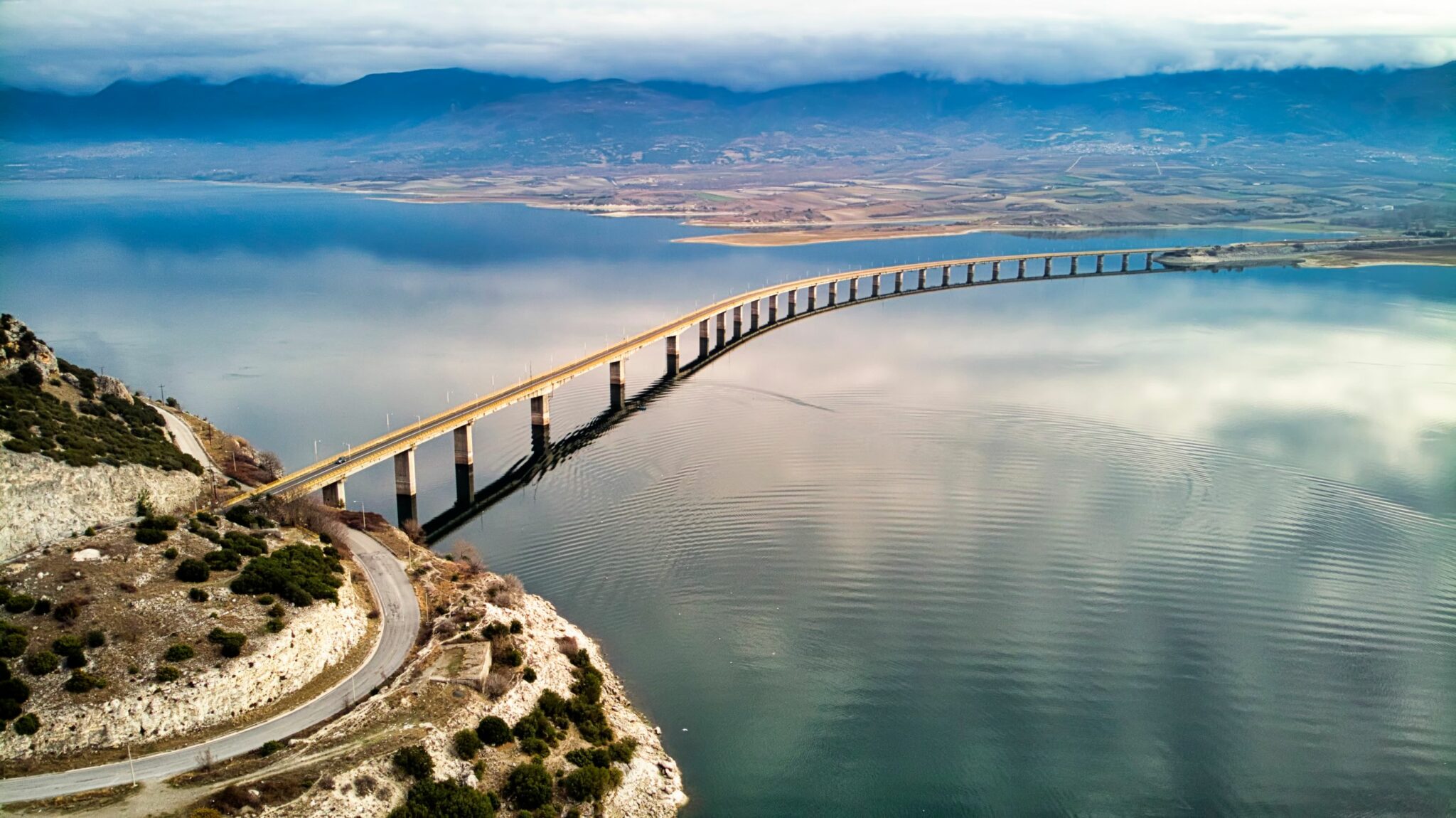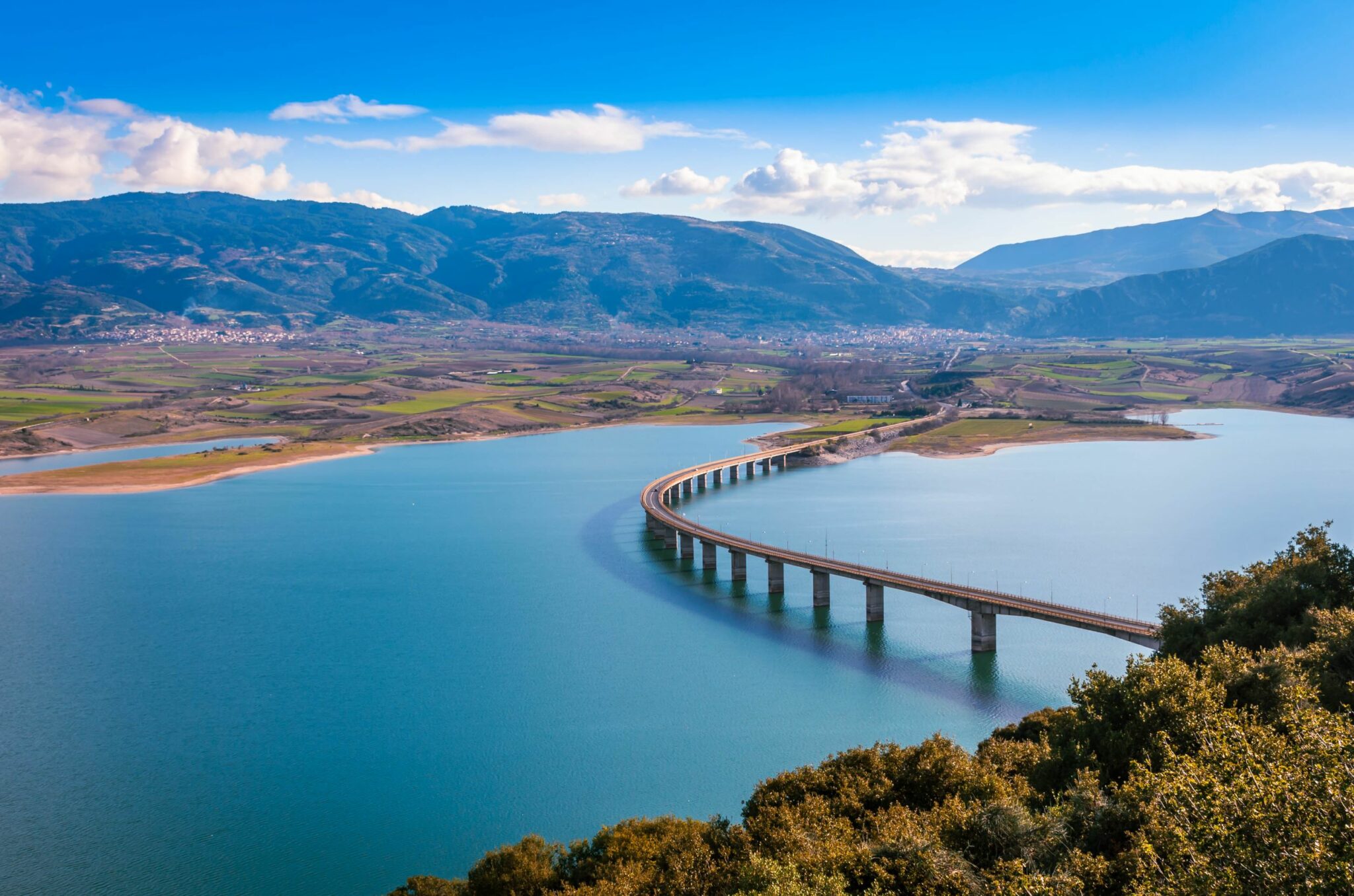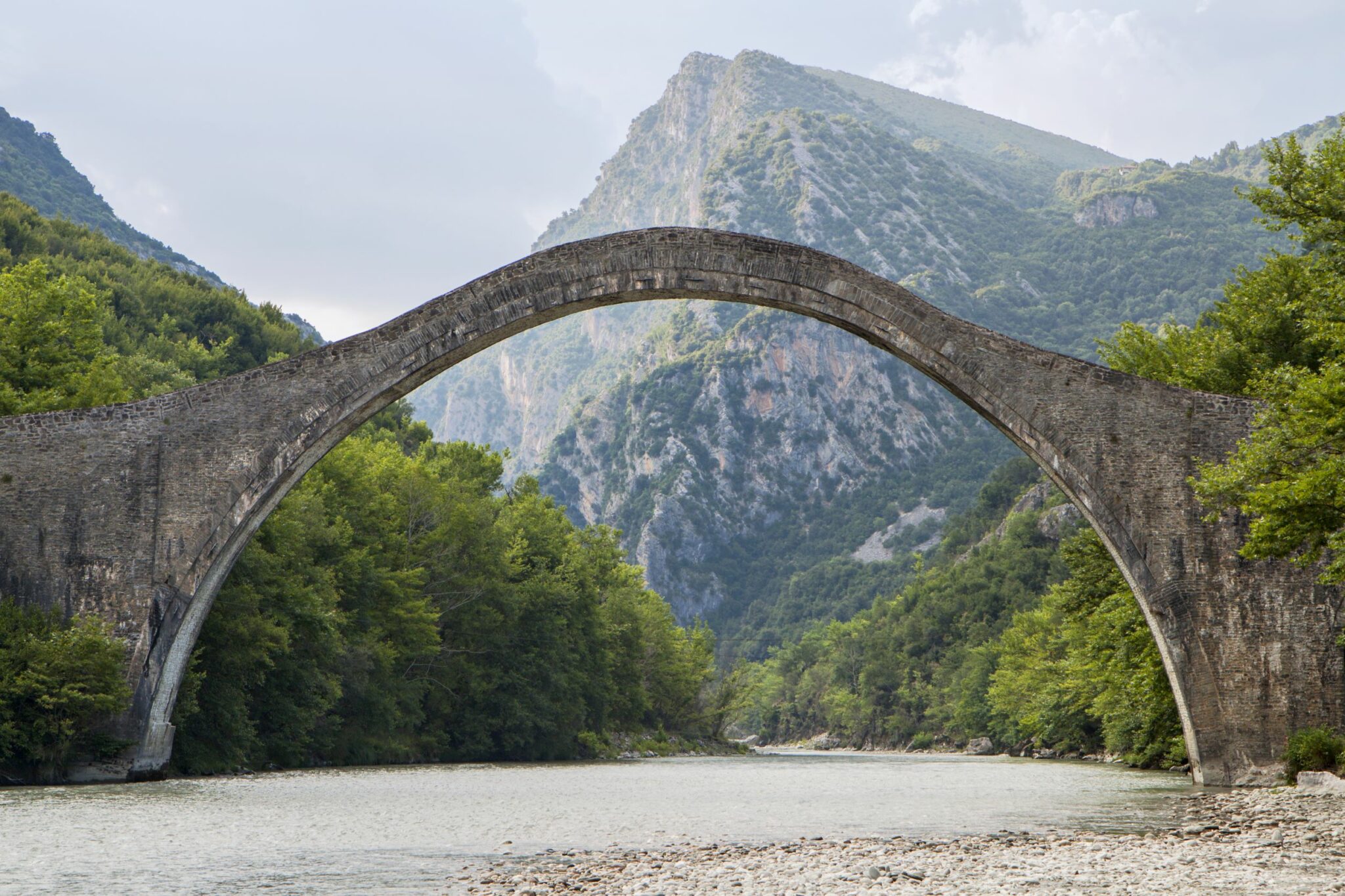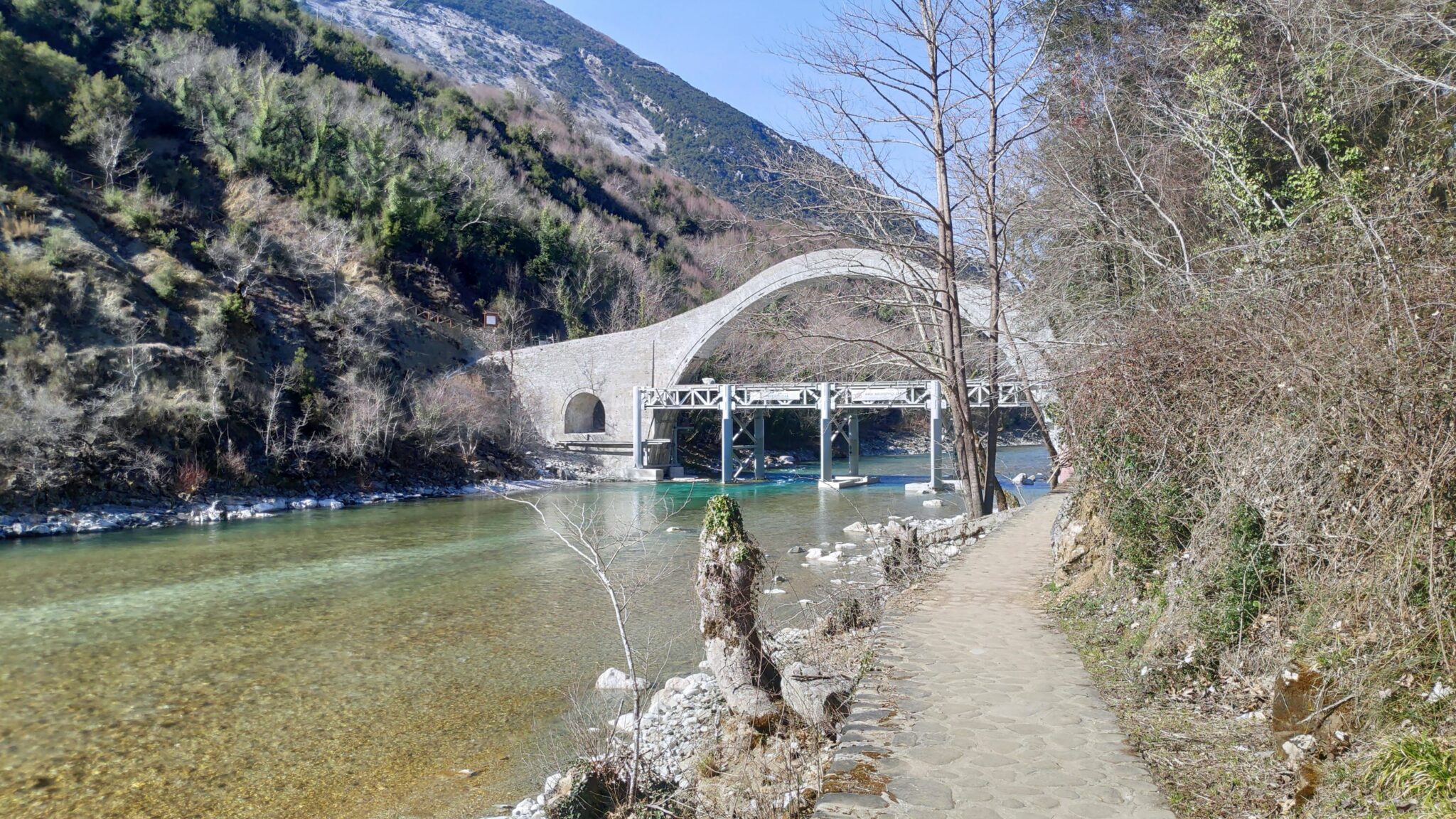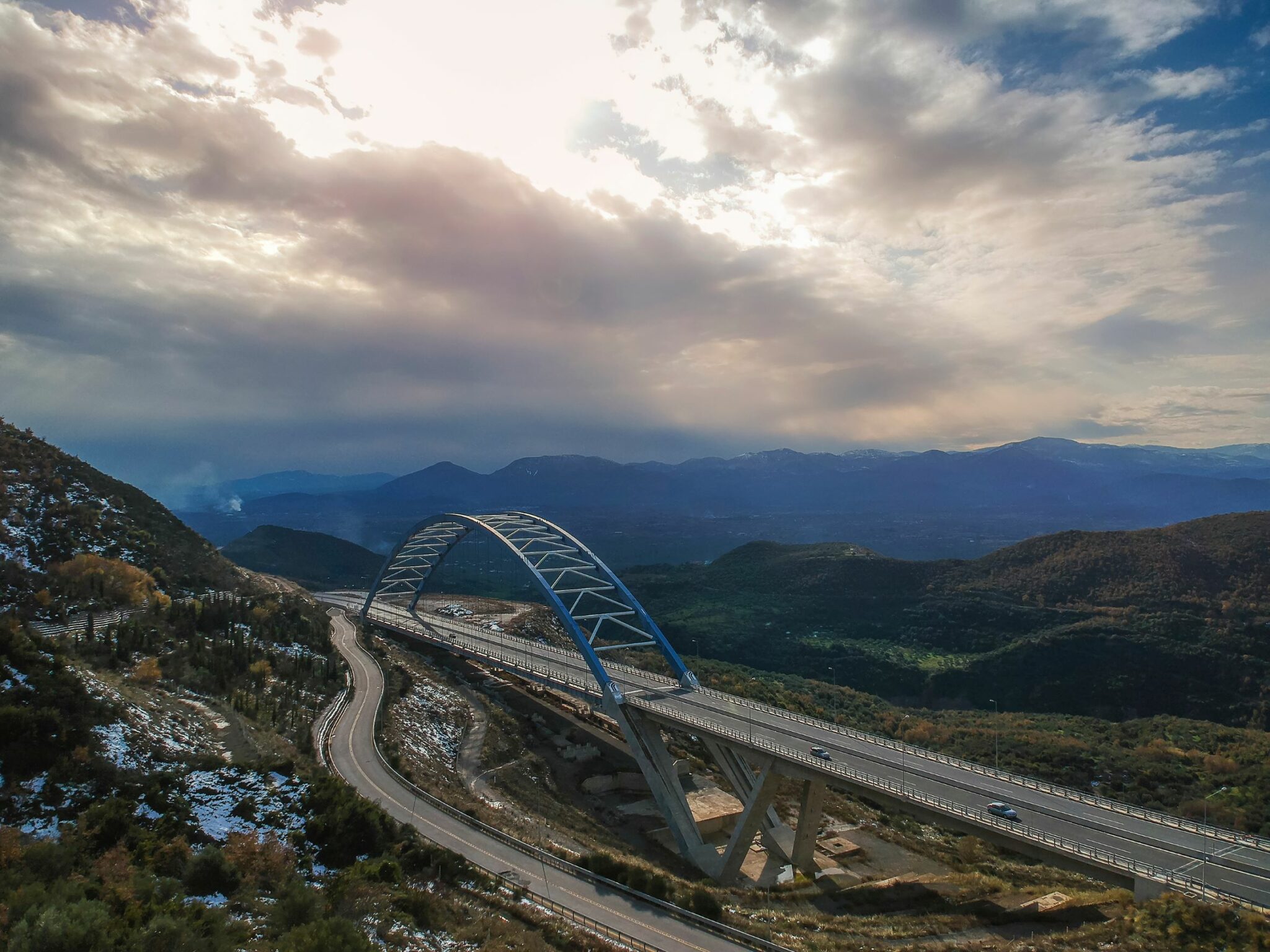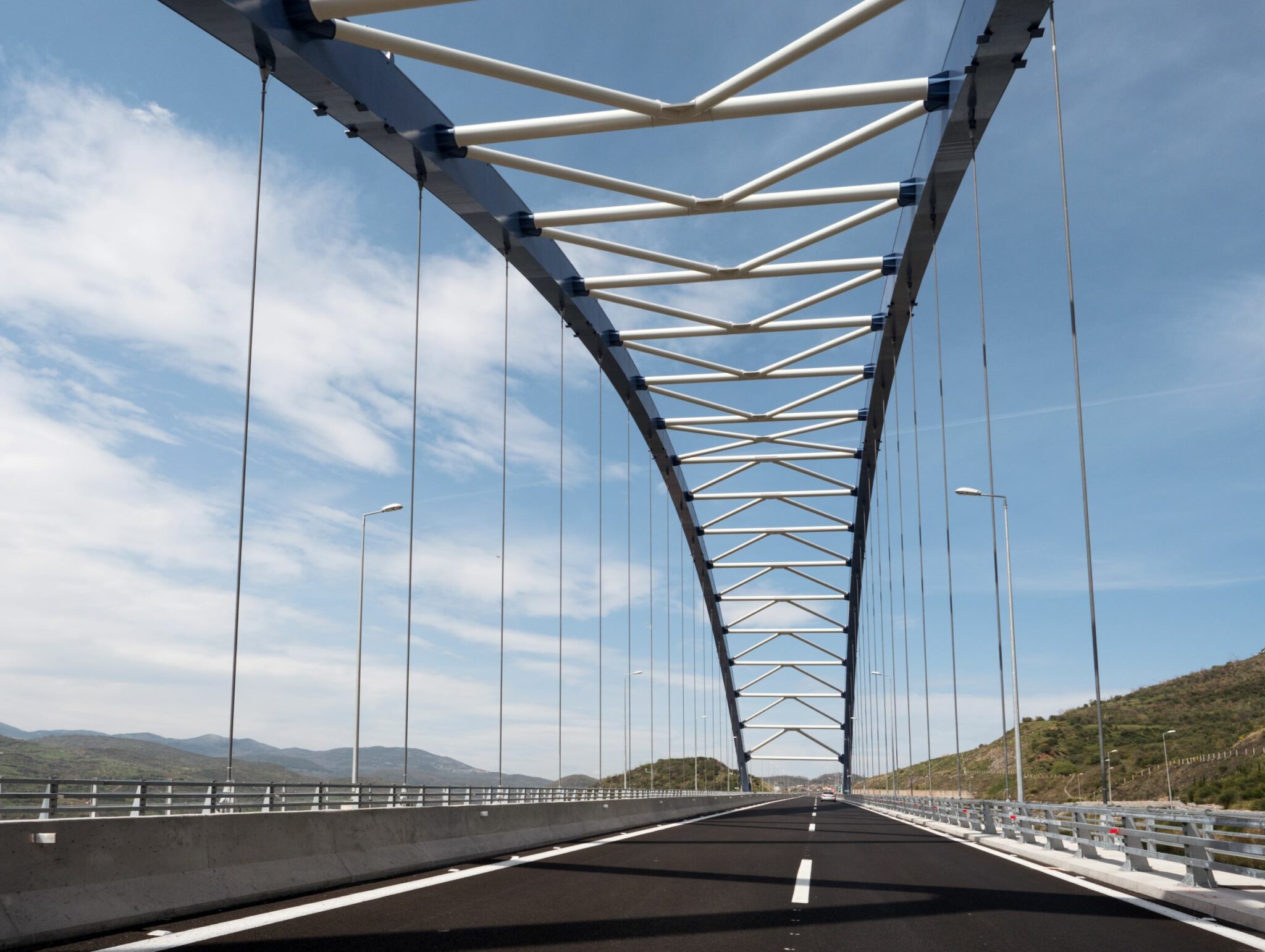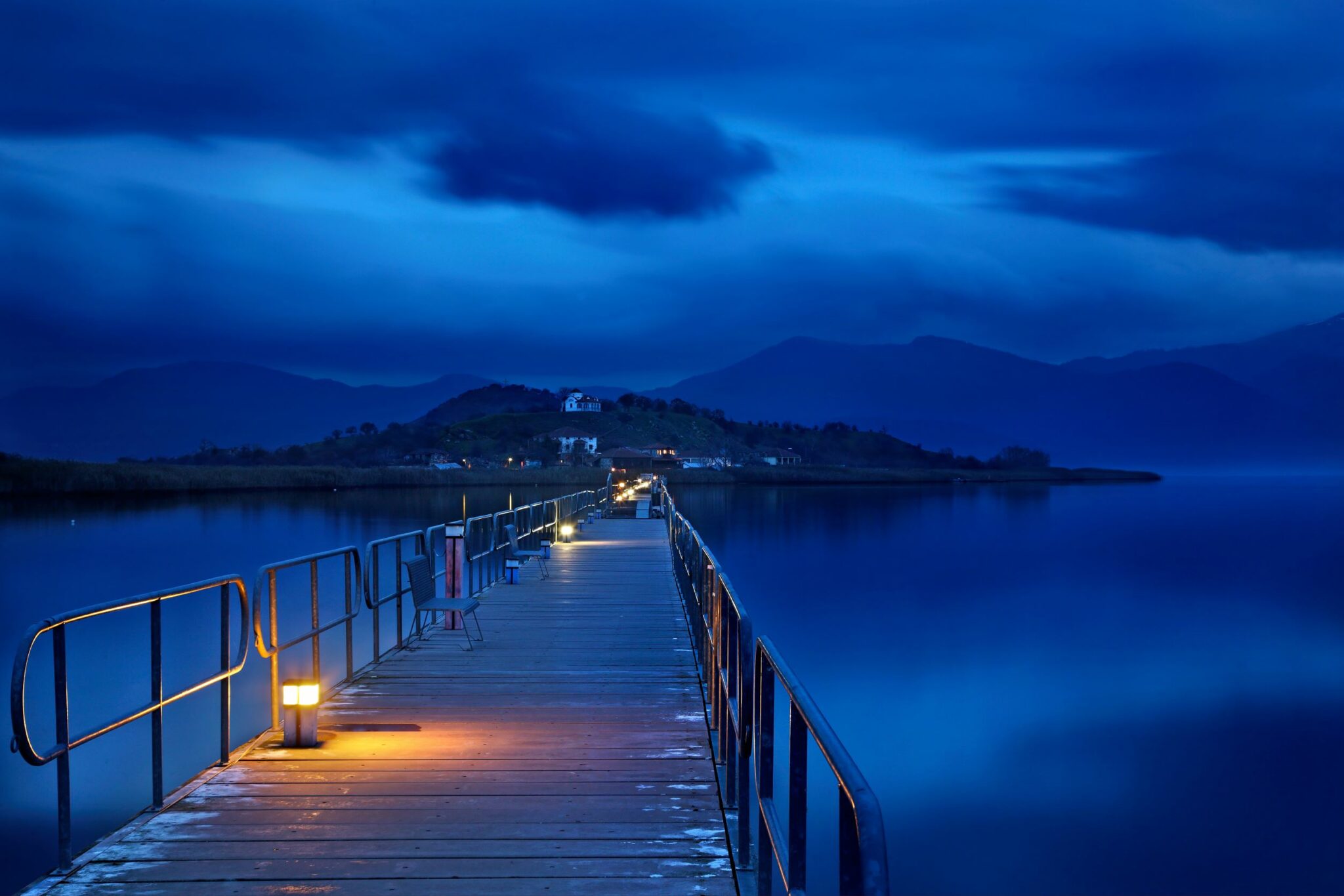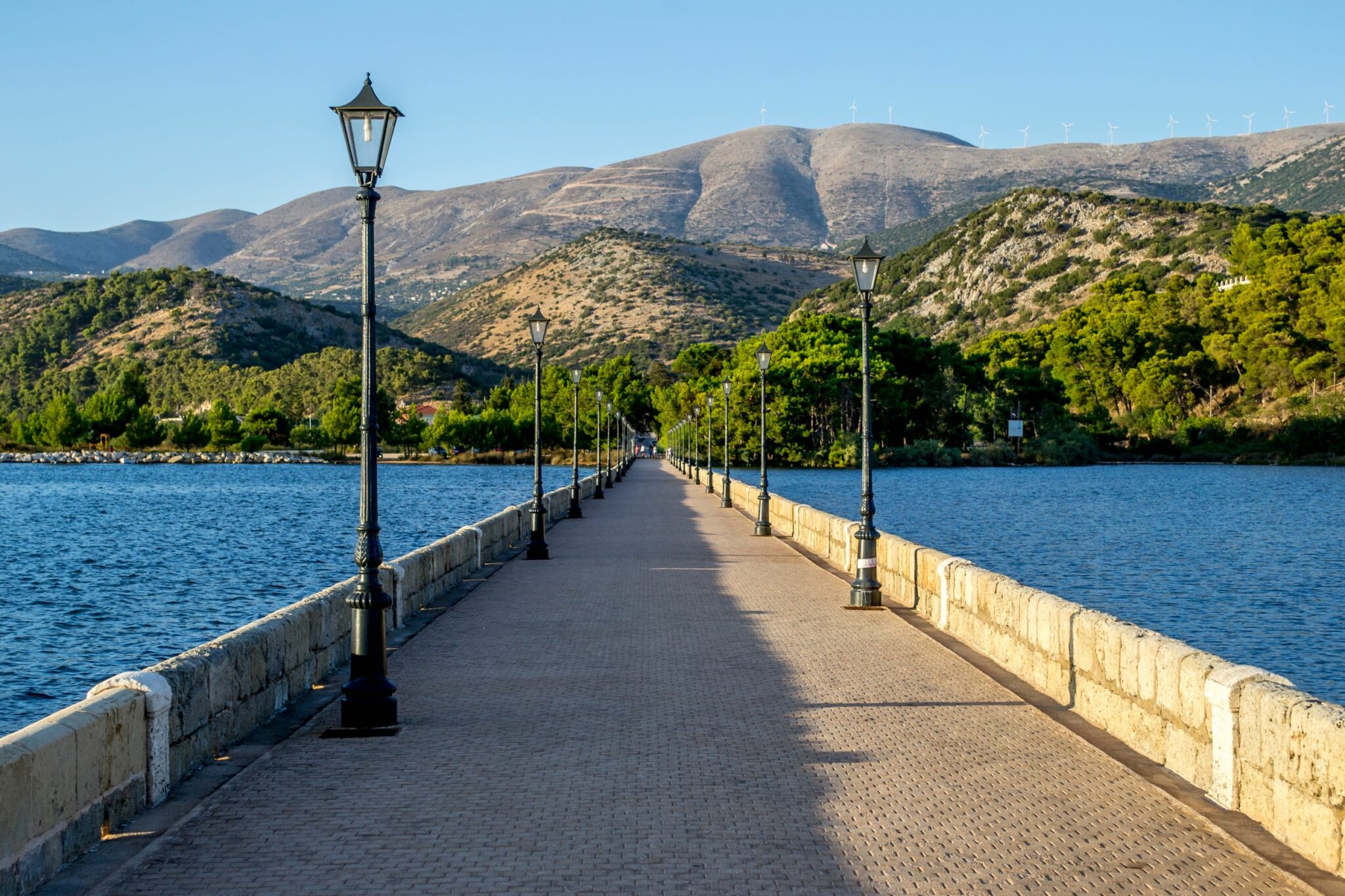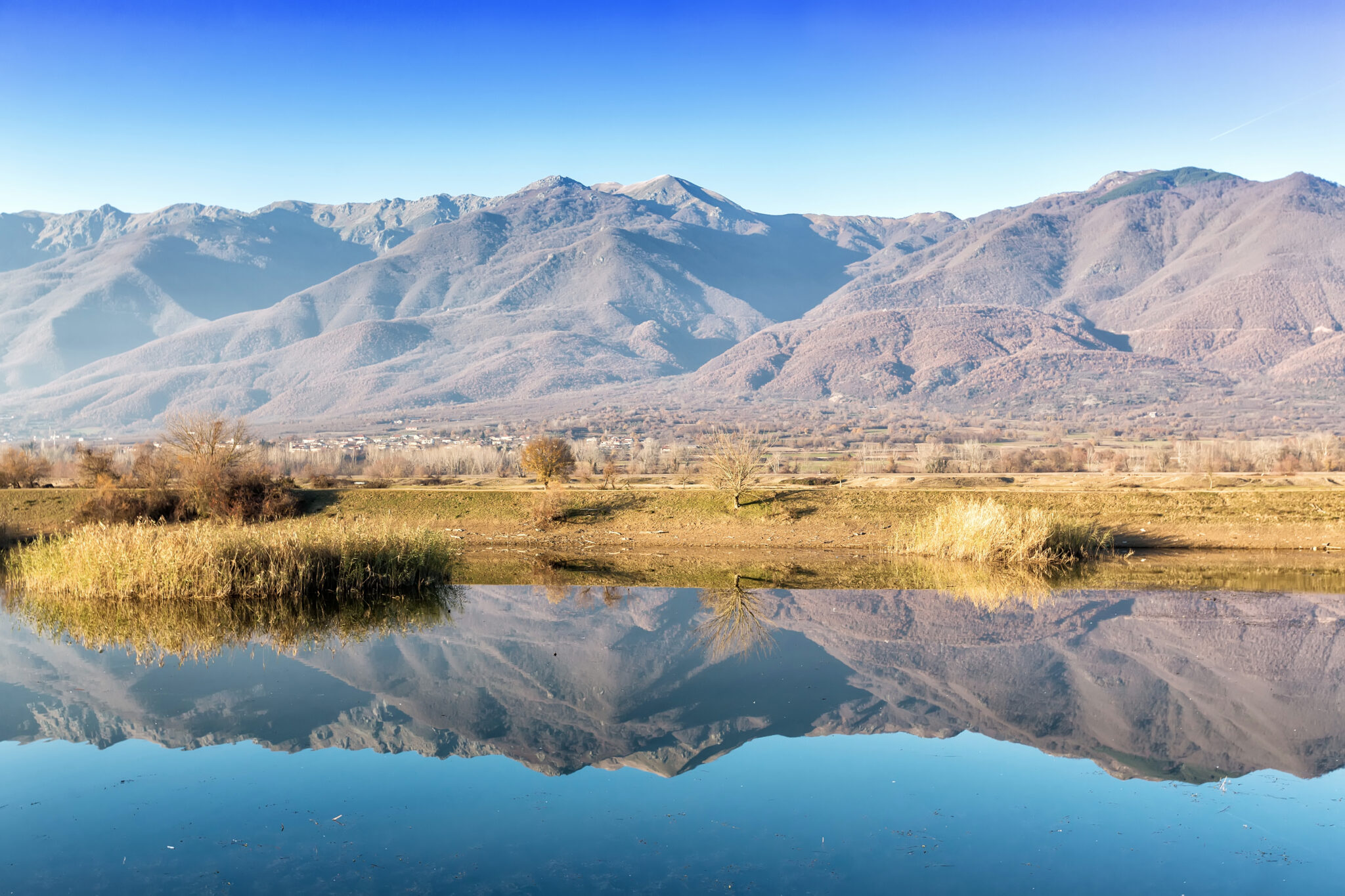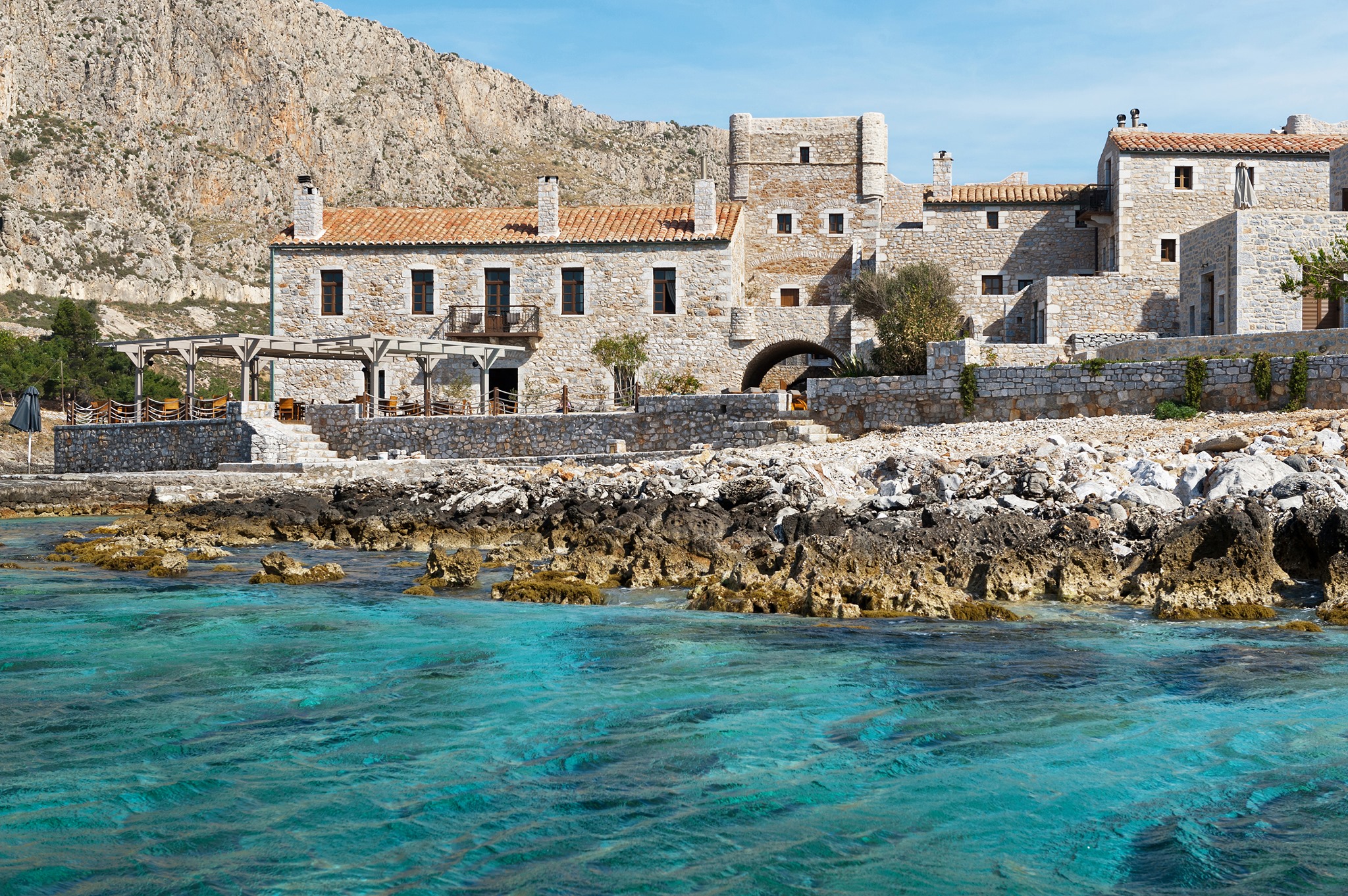It’s highly likely that the most famous Greek bridges are the Rion-Antirion bridge and the bridge of Arta.
Two very distinct cases, of different times, different technologies, that resonate differently to the public.
They show that bridge building in Greece has a past, but also recent great achievements. Travel.gr presents 5 unique bridges around Greece, from the Prespa lakes to Kefalonia.
Servia High Bridge
Second to the Rion-Antirion, it is probably the most impressive bridge in Greece. It’s part of the Kozani – Larissa National Road and is 15 km from Kozani and 7 km from Servia. It’s construction was completed in 1975, to cross over the artificial Polyfytos lake that had been created a few years ago with the construction of the damn of the same name. Up until the construction of the Rion-Antirion bridge it was the longest bridge in Greece.
In the past, in the same location, there were other bridges, going over the river Haliakmon – already from 1890. The creation of the artificial lake created the need for a much larger bridge, as those over the river were less than 250-metres-long. Its 27 columns were placed before the lake was created, and its total length is 1.372 m. Crossing the bridge, either on foot or by car, is a remarkable experience.
Plaka bridge
Just like the bridge of Arta, that also goes over river Arachthos, the Plaka bridge, the longest one-arch bridge in the Balkans, also has a long and turbulent history. The first bridge ever to be built in this location in 1863, collapsed almost immediately. Some say it happened during the demoulding, others that it happened on the inauguration day. The next bridge was built in 1866 and played an important role in the development of the area of Tzoumerka. During the Occupation it facilitated the work of the National Resistance members. After the Second World War, with the creation of the highway, its practical value decreased, and it became mainly a sight. Until in 2015, and after suffering significant weather damage in 2007, the arch collapsed after a strong rainfall. One of the most important monuments of Epirus and modern Greece seemed to have been lost forever, until the National Technical University of Athens declared that they can and must restore the bridge and started working on the project.
The new bridge was inaugurated in 2020, when the metal frame, supporting the bridge during construction, was removed. The bridge not only has the same design but was made using the same materials as the old bridge, without the use of any new materials or techniques. According to the statement, the engineers “read in the right way what the original builder, Kostas Mpekas, and his team saw 150 years ago”. This was possible through photographs, descriptions and the engineers’ experience.
Tsakona Arch Bridge
A bridge with an impressive building schedule and also an impressive visual and practical result. It was completed in 2016, after 8 years of construction work, and it’s one of the longest multi-span arch bridges in the world, the longest of its kind in Greece. Part of the Korinthos-Tripoli-Kalamata highway, the bridge crosses the Tsakona valley, an area where many landslides happen. This was one of the many technical issues the engineers had to address. The final result, apart from being very beautiful, is something they can be proud of. The bridge is 390 m. long, its second, 300-metre-long, span hangs from two steel arches that link the landslide areas.
The technical originality of the project resulted in attracting the interest of Greek and foreign educational institutions, including the National Technical Institution of Athens and the Imperial College, who visited the site during construction.
The floating pedestrian bridge of Agios Achilios
Agios Achilios is a tiny island inside the Mikri Prespa lake. It’s 60 km from Florina and 65 km from Kastoria. It’s the second, after the island inside the lake of Ioannina, inhabited island inside a lake in Greece. Since 2000 the island is not exactly an island anymore, since it’s connected to the banks of the lake via a wooden pedestrian bridge. It’s 650 m. long and 3 m. wide. There are no innovative building techniques to mention here.
Crossing the bridge will make you understand why it was included in this list. The landscape is stunning and rare in Greece. Nature loving hikers can sit on one of the bridge’s benches and just enjoy the view. This location attracts birdwatchers from all over Europe.
De Bosset Bridge
One of the hallmarks of the town of Argostoli and the longest stone bridge over the sea in Europe. It was constructed in 1812 when Kefalonia was under British rule, by the Swiss engineer Charles De Bosset, officer of the British army and governor of the island. The 900-metre bridge connects Argostoli to the other side of the Koutavos lagoon. At the time it was built it gave easier access to Lixouri. Apart from the obvious advantage of shortening the way, the bridge also helped with public health issues. In the past, to get to the same destination the residents had to go around the lagoon, and. at the time, mosquito bites that caused infections and infectious diseases were very common.
Next to the bridge, in the sea, there is an obelisk monument honouring the engineers and workers who built the bridge. During the 1953 earthquakes, the bridge suffered serious damages, while in the following years it decayed further. A few years ago, the bridge was closed to visitors for its restoration. Now it has been turned into an exclusively pedestrian bridge that attracts many visitors who want to take a picture on it.



